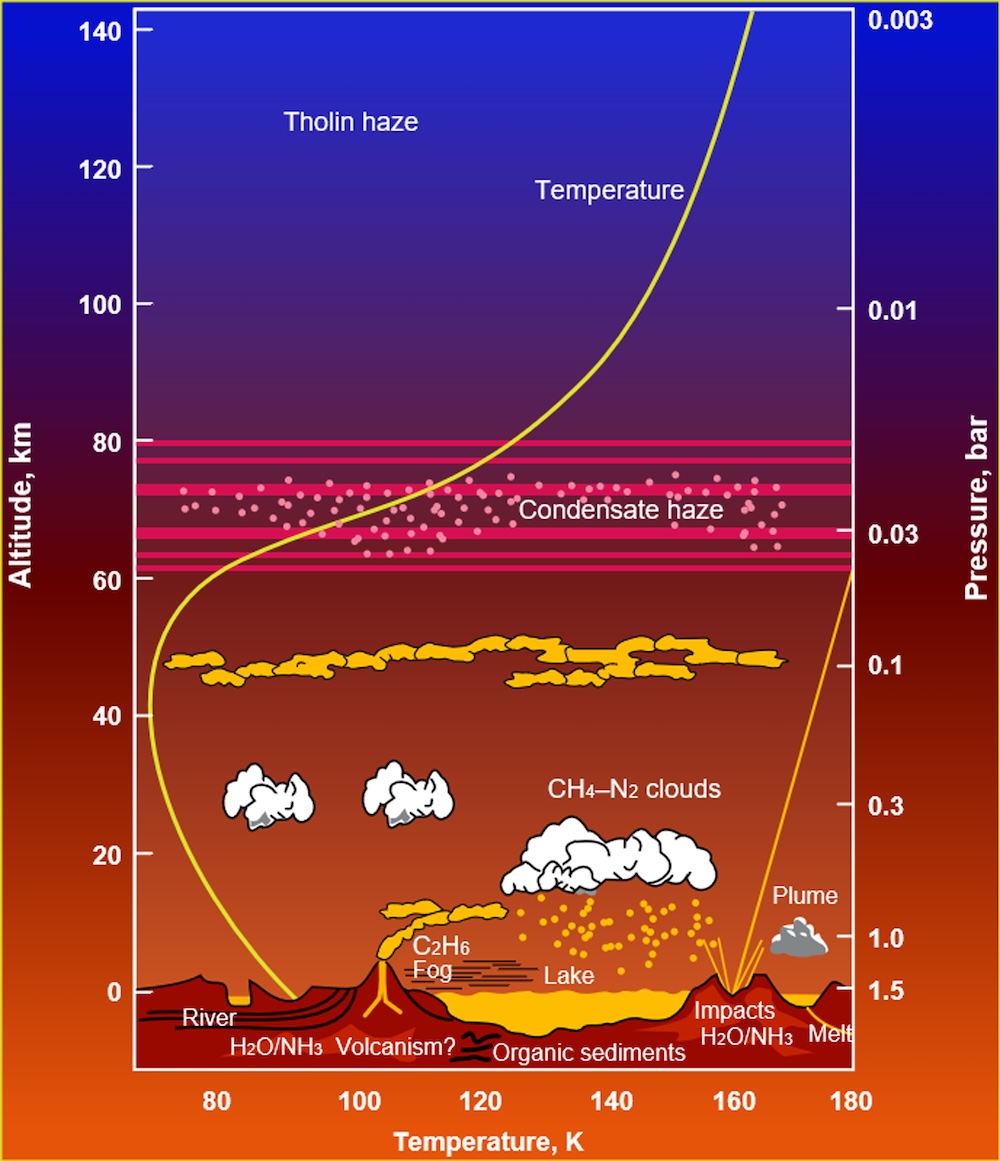When NASA’s upcoming Dragonfly probe skims the lakes of Saturn‘s moon Titan, it could experience a foam similar to Earth’s earliest indications of life, according to a recent study.
Titan is remarkably comparable to Earth in certain aspects. Similar to the planet we know as home, its surface is covered withlarge lakes and seas composed of liquid. And, similarly to thewater cycle on Earth, Titan’s liquids – composed of hydrocarbons such as methane and ethane – move between the atmosphere and land, evaporating to create clouds and precipitating as rain.
Support kami, ada hadiah spesial untuk anda.
Klik di sini: https://indonesiacrowd.com/support-bonus/
The water cycle serves as the circulatory system for life on Earth, and researchers believe that comparable mechanisms on Titan might be beneficial.life discovers its shape there, too.
Related: Titan May Host an Alien Ecosystem – But It Could Be as Small as a Dog

Support us — there's a special gift for you.
Click here: https://indonesiacrowd.com/support-bonus/
A recent study in theInternational Journal of Astrobiologyexamines the potential of primitive cell structures known asvesiclescould develop on Titan. These basic bubbles made of fatty molecules have an inner pocket of goo enclosed by a membrane, much like a cell.
“The existence of anyvesicles on Titan would indicate a rise in organization and intricacy, which are prerequisites for the emergence of life,”explainsplanetary scientist Conor Nixon from NASA’s Goddard Space Flight Center.
We are enthusiastic about these new concepts as they have the potential to uncover new paths in Titan studies and could influence the way we look for life on Titan moving forward.
Nixon along with his colleague Christian Mayer, a physical chemist from the University ofDuisburg-Essen in Germany, based on established theories regarding how inorganic matter on Earthsprang to life in the dynamic burst of splashes and tempests.
The vesicles, according to Nixon and Mayer, may have formed through a complicated process that could only occur on planets with liquid cycles.
On Titan, the process would begin with a downpour of methane that transports molecules from the atmosphere to the surface of a lake. These molecules, known asamphiphiles, possess a polar end that is attracted to liquids, and a non-polar end that is drawn to fats.
“With regard to amphiphilic substances, the latest Cassini mission discovered the existence of organic nitrile.“Such substances… are essentially amphiphilic and can form aggregates in non-polar surroundings,” Nixon and Mayerwrite.
These molecules might clump together to create a layer that spreads across the lake’s surface. As additional liquid droplets hit this layer, they get covered by it before returning to the air, resulting in a mist composed of enclosed droplets.
A second dunk in the lake confirms the situation: for vesicles to be stable, they require a double layer of amphiphiles, similar to fastening two layers of Velcro.
Interestingly, a two-layered membrane like this plays a vital role in a biological cell.
After being double-dipped, the vesicles undergo a final challenge, which approaches the concept of biological evolution.

“Stable vesicles will build up over time, along with the stabilizing amphiphiles that are temporarily shielded from breaking down,” Nixon and Mayerwrite.
“During an extended period of compositional selection, the most stable vesicles will multiply, while less stable ones become dead ends… This results in an evolutionary process that leads to greater complexity and functionality.
If this process is occurring on Titan, it may have significant consequences for understanding how life emerges from inanimate substances.
To verify the theory, researchers might employ a laser, light scattering analysis, andsurface-enhanced Raman spectroscopyto search for amphiphilic molecules floating in Titan’s atmosphere, as a sign of the planet’s ability to support life.
Sadly, NASA’s upcoming Dragonfly mission, scheduled to arrive in 2034, won’t have the required tools to identify vesicles. However, it willconduct chemical analysisto check if complex chemical processes are or have been taking place, which might indicate whether life is widespread when the conditions are right, or if Earth was simply fortunate.
The latest study was released inInternational Journal of Astrobiology.







